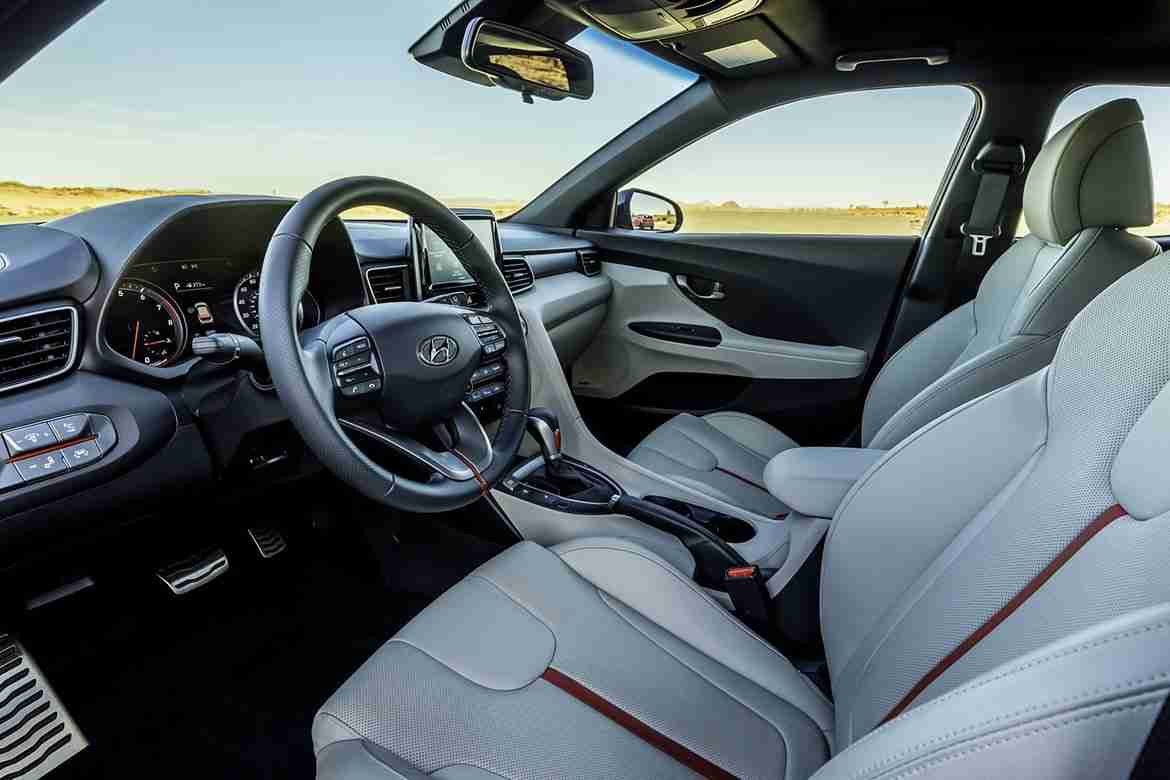The Hyundai Veloster, a dynamic and audacious offering from the South Korean automotive stalwart, has carved its niche in the competitive world of compact cars. Often appreciated for its distinctive three-door configuration and sporty aesthetic, the Veloster also deserves acclaim for its efficiency, particularly when it comes to miles per gallon (MPG). This review embarks on a detailed exploration of Veloster’s fuel efficiency, carving out insights for potential buyers and automotive enthusiasts alike.
Understanding the Engine Options
To appreciate the Veloster’s efficiency, it is pivotal to comprehend the various engine configurations it offers. The standard model is equipped with a 2.0-liter four-cylinder engine, known for its balance between performance and economy. With an EPA-estimated 26 MPG in the city and 34 MPG on the highway, this variant serves as an appealing choice for those prioritizing economical commuting.
For enthusiasts seeking a higher adrenaline rush, the Turbo variant boasts a 1.6-liter turbocharged four-cylinder engine. This spirited option, while delivering a robust 201 horsepower, manages to impress with its efficiency too. It achieves 26 MPG in the city and a commendable 33 MPG on the highway. Such figures indicate that performance does not necessarily come at the expense of fuel economy.
The athletic N variant, however, propels the Veloster into a different league with its 2.0-liter turbocharged engine. While it emanates exhilarating power, potential buyers must weigh this against its efficiency, which stands slightly lower than the other variants. The balance of thrill and practicality remains central to its appeal.
Transmission Choices and Their Impact on Efficiency
Another critical element to consider is the transmission. The Veloster offers diverse transmission options, each impacting fuel efficiency differently. The standard 6-speed manual transmission provides a more visceral driving experience, often appealing to purists. However, for those prioritizing fuel economy, the 6-speed automatic transmission or the 7-speed dual-clutch automatic transmission prove to be the more beneficial choices.
Both automatic options enhance fuel efficiency by optimizing gear shifts, thus enabling the engine to operate within its optimal power band. This leads to reduced fuel consumption, particularly during highway driving where the vehicle maintains high speeds with minimum strain on the engine.
Driving Conditions and Real-World Efficiency
Unquestionably, the Veloster’s MPG figures shine brilliantly on paper, yet real-world driving offers a different perspective. Factors such as driving conditions, individual driving styles, and regional fuel types can significantly influence actual fuel economy. Urban dwellers may find their MPG significantly lowered due to stop-and-go traffic conditions.
Conversely, highway drivers may experience fuel economy close to the higher end of the spectrum. The lightweight chassis and aerodynamic design help to mitigate wind resistance, facilitating a more efficient drive during long stretches of road.
Innovative Features Enhancing Fuel Economy
Hyundai has ingeniously designed the Veloster with features aimed at bolstering fuel economy. These include a start-stop system that automatically shuts off the engine when the vehicle is idling, preserving vital fuel in congested scenarios. Additionally, the incorporation of regenerative braking technology in some variants helps to recapture energy that would otherwise be lost, feeding it back into the electrical system and reducing reliance on the engine.
Moreover, the Veloster’s Eco Driving mode allows drivers to optimize their performance for fuel efficiency. Activating this mode adjusts throttle response and transmission settings, enhancing the car’s fuel economy without compromising an enjoyable driving experience.
Comparative Analysis with Competitors
When positioned within the segment, the Veloster holds its ground against various competitors. Comparing MPG with rivals like the Ford Focus and Honda Civic indicates that the Veloster, while sportier, does not lag significantly in efficiency. In fact, the Veloster’s innovative design and engineering often render it a distinguished option for those seeking thrills and efficiency simultaneously.
Yet, consumers must consider the whole package. While the Veloster boasts commendable MPG, aspects such as interior comfort, cargo space, and infotainment systems also constitute essential facets of the overall ownership experience.
The Cost of Ownership and Long-Term Efficiency
Examining the overarching implications of MPG on the cost of ownership unveils a deeper layer of practicality. A vehicle with higher efficiency mitigates the long-term fuel expenses that inevitably accrue over time. In an era where fluctuating fuel prices can wreak havoc on budgets, driving a vehicle like the Veloster presents more than just immediate gratification—instead, it represents a smart, long-term investment.
Furthermore, considering the robust warranty coverage offered by Hyundai adds to the value proposition, as it guarantees peace of mind for potential buyers. This commitment to durability ensures that drivers can enjoy the exhilarating performance and impressive fuel economy of the Veloster without undue worry about potential mechanical issues.
Conclusion
Ultimately, the Hyundai Veloster stands as a remarkable testament to how sporty can coexist with efficient. With a variety of engine options, thoughtful transmission choices, and innovative fuel-saving technologies, it appeals to a broad audience of drivers—from the daily commuter to the spirited enthusiast. As the automotive industry continues to evolve, the Veloster remains poised at the intersection of performance and efficiency, crafting an enduring legacy that is both thrilling and practical. In a rapidly changing market, the Veloster’s miles per gallon statistics not only meet expectations but set them, making it a vehicle to consider for anyone yearning for a unique and efficient driving experience.
